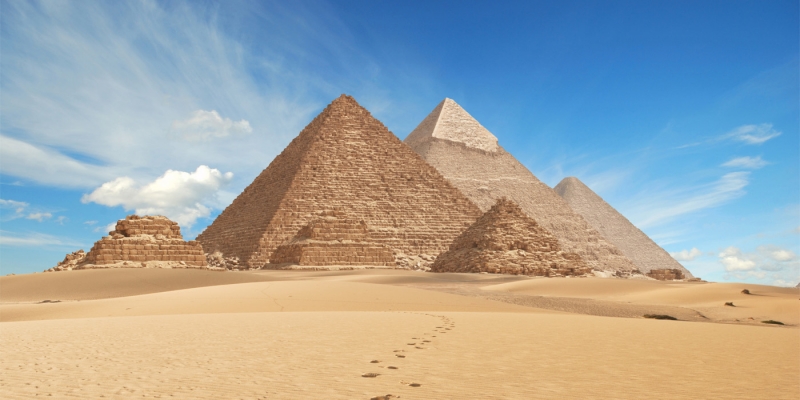ADVERTS

Of the seven admirable buildings and sculptures of antiquity, six disappeared, leaving only the pyramids of Egypt.
Antipater of Sidon, Greek poet, between the years 150 to 120 BC, was responsible for the first list of the wonders of the world.
They were considered as a set of works made by man, distinguished by their beauty, grandeur, sumptuousness and magnitude.
Check out the seven wonders of ancient time
• The Great Pyramid of Giza: the only existing ancient wonder. Built by the Egyptians around 2500 BC, as a funerary monument to King Cheops. Date of 4,500 years. It is the largest of the three pyramids at Giza. According to the Greek historian Herodotus, 100,000 men worked on its construction for 20 years. It reveals itself as a construction that required great knowledge of geography, astronomy, geology, mathematics and other sciences.
ADVERTS
• Hanging Gardens of Babylon: wonder attributed to King Nebuchadnezzar in 605 BC built as a gift to his wife, Queen Amyitis, in the city of Babylon, in Mesopotamia. They consisted of an architectural structure of terraces that contained an infinity of species of fauna and flora. Archaeological excavations in the 19th century found evidence of its existence, but it is still unknown if it really existed.
• The Statue of Zeus: located in the temple of Olympia in Greece, it was built in gold and ivory during 8 years, around 450 BC, measuring 10 to 15 meters in height, by the sculptor Phidias. It is the representation of Zeus sitting on his throne, indicating his superiority over the other gods of the Greek pantheon. Around 470 AD. C, the statue was destroyed in a fire in Constantinople, present-day Istanbul.
• The Temple of Artemis: There are possible remains of this temple in the British Museum. The Temple was built in honor of the goddess Artemis, from Ephesus (present-day Turkey). Rebuilt and enlarged for centuries until, around 262 AD, it was destroyed during the barbarian invasion of the Goths.
ADVERTS
• The Mausoleum of Halicarnassus: it was built by Queen Artemisia, around 350 BC, with the aim of housing the remains of her husband and brother – King Mausolus. The mausoleum was also located in Türkiye. Around the 15th century, it was destroyed due to earthquakes. Its remains were used to build other monuments.
• The Colossus of Rhodes: built in Greece, around 300 BC, it was a bronze statue of 33 meters, in honor of the god Helios (god of the Sun), who helped in the victory over the army of Demetrius Pollorcetes. It stood for fifty years and was destroyed by an earthquake in the city of Rhodes in 226 BC.
• Lighthouse of Alexandria: it was built by the Greek architect Sóstrato de Cnido, around 250 BC Made of marble and mortar, it served to guide sailors on their night trips. It began to crumble around the 4th century, but had already withstood several earthquakes.
